|
For the amount
of Limestone we have dissolved - now in excess of 200 pounds
or so, it was surprising to only see about a teaspoon of bryozoans
show up the acid fines. But this is an additional clue
to the conditions which deposited the Fort Apache Limestone.
As noted from write ups on previous batches of material, the
amount of sand and silt mixed in with the limestone was a whopping
10%. The source of course was the Sahara like dune complex
on shore with its blowing winds and large amount of muds and
silts washing into the sea. The dune complex is now lithified
into the adjacent Schnebly Hill formation, and forms the
gorgeous Permian red buttes seen in Sedona and surrounding areas.
Great for scenery, but at the time, bad for the marine fauna
which had to deal with large amounts of sediment always raining
down on the ocean bottom.
This explains the
almost complete lack of certain fossils, such as crinoids, brachiopods
and corals. These invertebrates cannot tolerate large amounts
of sediments raining do on on them as it clogs their filter feeding
apparatus, and will not be found in such areas. Bryozoans
were also filter feeders, and they are very limited in this formation,
as are sponges.
We encounter three
types of small bryozoans in the acid fines from the Fort Apache.
First, we have a branch or twig like diminutive bryozoan with
extremely small pores over its surface. These are some
of the smallest bryozoans we have ever seen! Second, a
larger zooid type that encrusts shells and urchin spines.
These have excellent detail in each zooecium. (the body
chambers for each animal) And finally, fan shaped fenestrate
bryozoans can be found in small broken pieces. These net
like "moss animals" have some very nice fine details
in the fan segments. Only a half a teaspoon of those were
found, so are quite rare.
Here are some representitive
images of the bryozoans we have found in the Fort Apache Limestone,
with magnifications that vary from 7x to 45x.
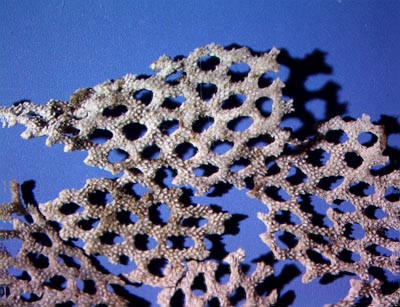 |
Fenestrate
bryozoans - 7x. These fan shaped colonies were always found in
tiny centimeter or less sized fragments, and never larger. But
they have excellent surface details on the zooecium side. |
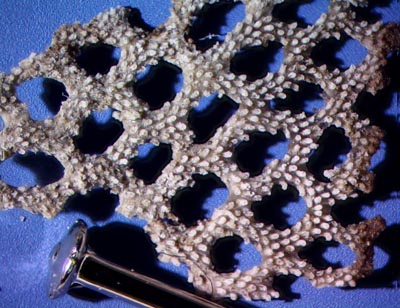 |
Closer
view, with pin head at bottom for scale. |
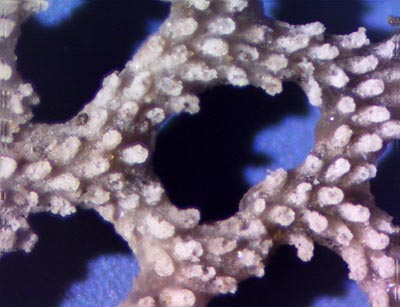 |
45x
view showing small tube like pouches which contained individuals.
These small tube like chambers are called zooecium in fossils
and cystid for still extant living species. |
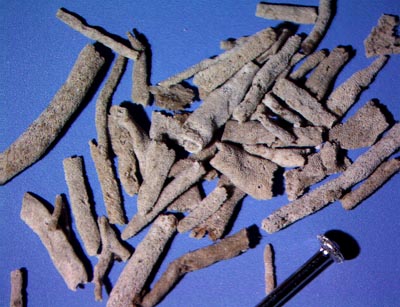 |
Every
small branching bryozoan we found can fit in a half a teaspoon.
Some have Y shaped branching, others are straight or tapered.
A pinhead for scale is at the bottom. |
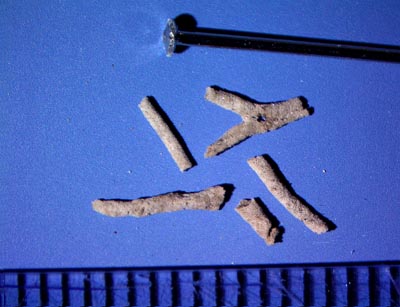 |
Some
of the smallest members of this type seen here. Millimeter scale
at bottom. |
 |
45x
view of individual with very tiny pores. |
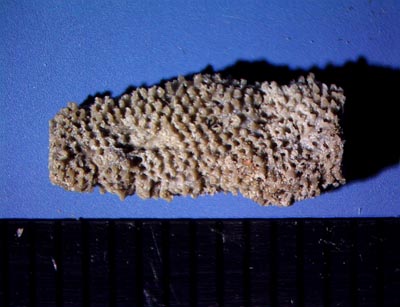 |
The
third type was a more robust larger encrusting bryozoan. This
one covers the exterior of a broken urchin spine. Millimeters
at bottom. |
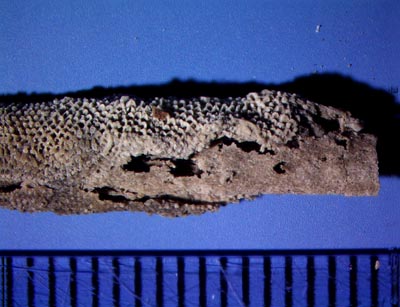 |
An
urchin spine with a bryozoan partly encrusting its surface. |
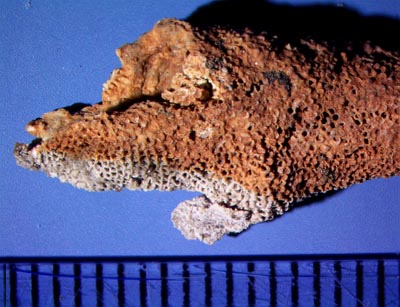 |
The
largest encrusting specimen was stained red by oxides in the
silica. |
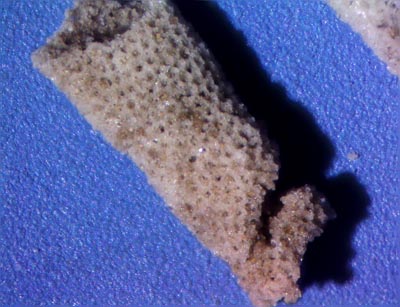 |
Encrusting
type over a spine, showing detail in the zooecium. |
|
